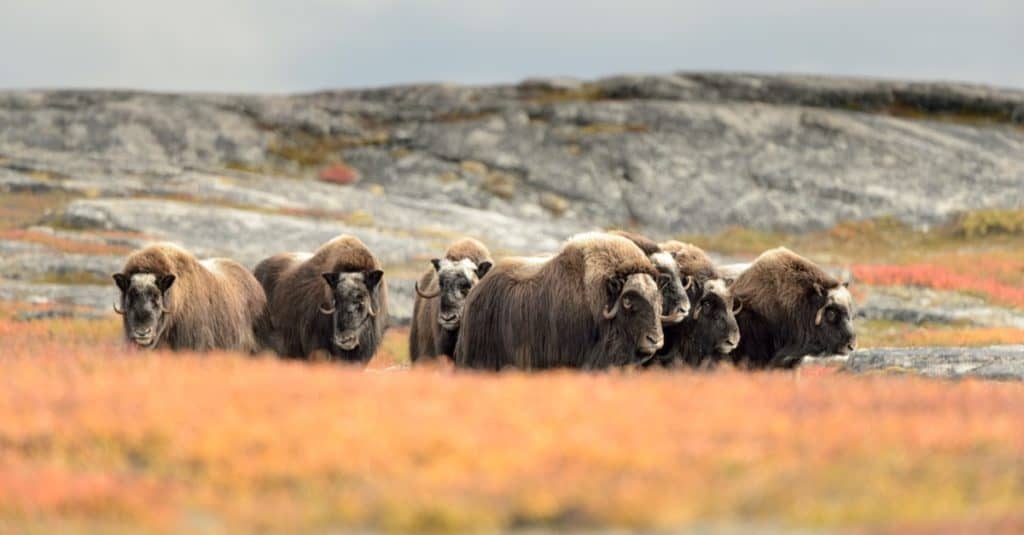Things look very positive for the wolf pack at the start of this clip and very bad for an ox calf. But the fortunes of the two species soon switch around. These muskoxen are not going to let one of their babies be snatched without putting up a strong fight. One of the larger ox charges at the wolf, knocking her away from the calf. This gives the others time to regroup and form a protective shield around the calf. With there formidable horns facing outwards, they create an impenetrable barrier, and all the wolves can do is sit and stare at them. Eventually, the predators have to admit defeat and slope off without bagging a meal.
Watch the Protective Shield Now
Where Do Muskoxen Normally Live?
The scientific name for muskoxen is Ovibos moschatus, and they are a circumpolar species, which means that they live around the North Pole. Therefore, you will find them in parts of Canada and Greenland. Historically, they were found in Alaska but disappeared in the late 1800s. In the 1930s, they were re-introduced to Alaska using animals captured in Greenland. They have also been introduced into Russia, Norway, and Siberia. Some herds have even made their way from Norway into Sweden. Their preferred habitat is arctic tundra. Here, the summers are very short, with a growing season of just three or four months. The winters are long and harsh. In the summer months, there is lush and abundant vegetation, but there is very little to eat during the winter.
What Do Muskoxen Normally Eat?

Muskoxen are generalized grazers.
©NaturesMomentsuk/Shutterstock.com
These large animals are herbivores and are classed as generalized grazers. In the summer, they eat grass, leafy plants, sedges, and pretty much any vegetation that they can find. In the winter, things are very different. They need to rely on willow, birch stems, roots, and mosses. Sometimes, they can find vegetation under the snow. The muskox and calves depend on their mother’s milk for up to a year.
How Do Muskoxen Normally Defend Against Predators?
Muskoxen are preyed on by polar bears, brown bears, and, as we see in this clip, wolves. The behavior that we see here is a typical defense strategy. The animals make a line with their heads down and their horns facing the predator. It is typical for them to place the calves behind the adults where they are most protected. When attacked by multiple predators, the herd creates a circle with their horns pointing out. The larger oxen may also charge at the predator in order to scare them away. It is not unknown for wolves to be killed when trampled by muskoxen.
The photo featured at the top of this post is © Fitawoman/Shutterstock.com
Thank you for reading! Have some feedback for us? Contact the AZ Animals editorial team.







